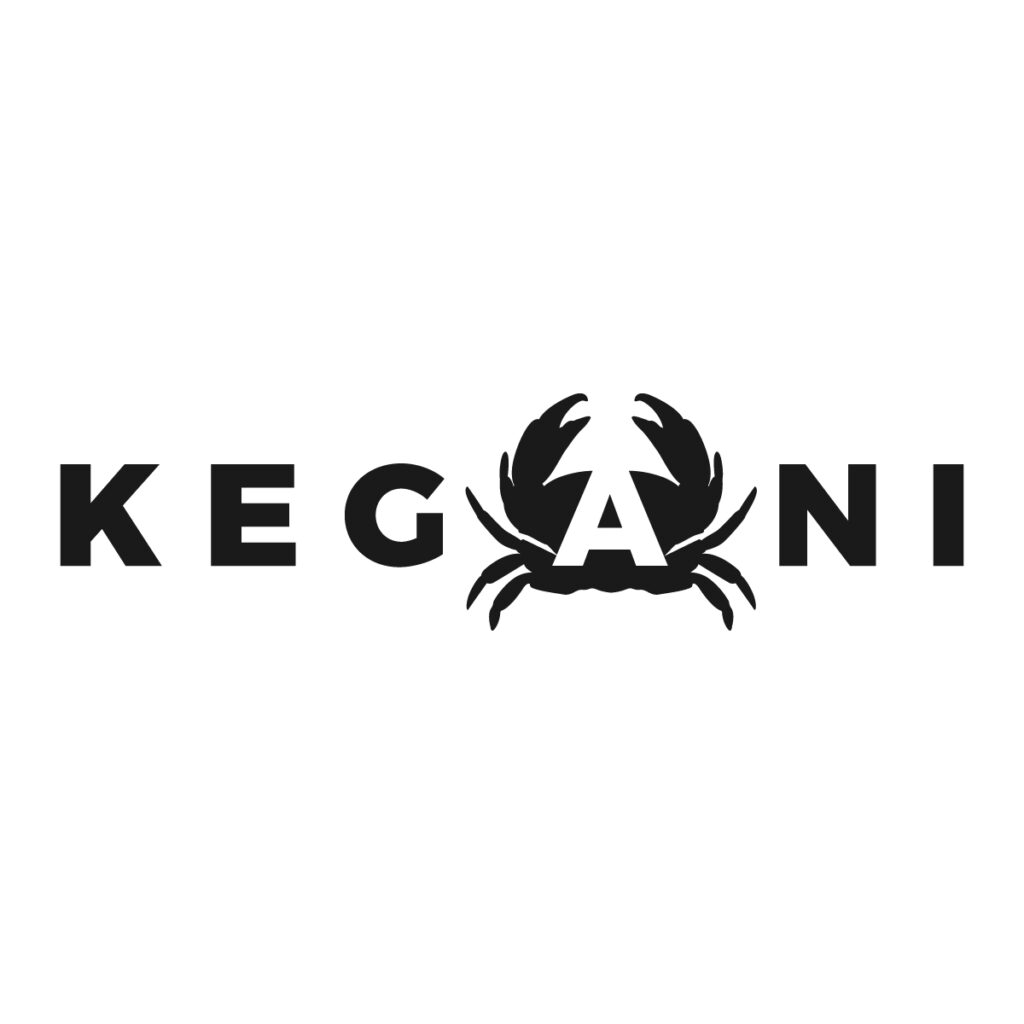Imagine offering your customers a knife that’s incredibly light yet tough as steel. Its handle gleams with a modern finish, promising both style and performance. This isn’t fantasy—it’s the reality of knives with carbon fiber scales, and they’re changing the game in the cutlery market.
For knife merchants, understanding this trend is crucial. In a market filled with options like FRN, Richlite, Grivory and G10, carbon fiber stands out for its unique combination of strength, weight, and aesthetics.
In this article, we’ll dive into the world of carbon fiber knife scales. We’ll explore their benefits, compare them to materials like G10 and titanium, and show you how they can enhance your product line, expanding the types of pocket knives you can offer.
Ready to make smarter choices for your inventory and stay ahead of the competition? Let’s dive in!
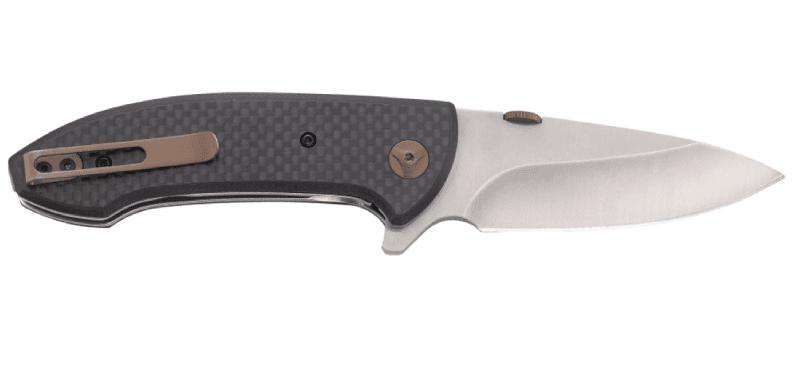
What are carbon fiber knife scales?
Ever wondered what makes carbon fiber knife scales so special? Let’s break it down in simple terms.
Imagine carbon fibers as ultra-thin hair strands, each only 5-10 micrometers thick, even finer than human hair. These fibers are primarily made of carbon atoms, like strings of tiny beads made of carbon atoms.
Next, we weave these “strings of beads” together like knitting a sweater, forming a fabric-like structure. This structure is already quite strong, but we need to enhance its strength and stability further.
So, we soak this “woven fabric” in a resin similar to strong glue. This step is like coating the knitted sweater with a waterproof adhesive, making it tougher and more durable. Then, we place this “glue-coated fabric” into a high-pressure, high-temperature oven to cure it. This step is like baking the sweater in an oven, making it more rigid and set.
Ultimately, this process creates a material that is both lightweight and extremely strong. This material is not only as light as a feather but also as strong as a rock, making it perfect for knife handles.
Appearance and properties
Carbon fiber scales can have a unique, sleek look. They can be finished in various ways, from polished to roughed up, allowing for different textures and appearances.
Care and maintenance
Carbon fiber is quite durable. However, it can get scratched. Polishing can help reduce the appearance of scratches and restore shine. Always handle with care and clean gently to maintain its look.
Pros and cons of carbon fiber handle/scales
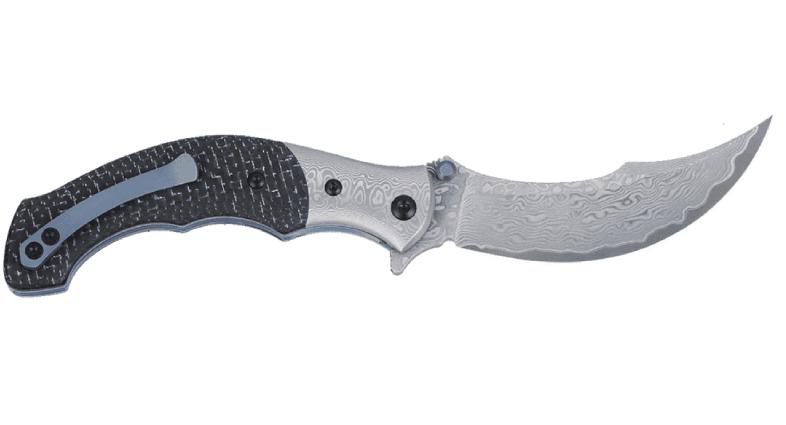
Pros
- Lightweight: Carbon fiber scales, a crucial part of a pocket knife, are extremely light. It only has a density of about 1500-2000 kg/m³, significantly lower than steel (about 7850 kg/m³).
- Strength: Despite being lightweight, carbon fiber is very strong. It’s five times stronger than steel, providing excellent durability for knives.
- Aesthetic appeal: The woven fibers of carbon fiber reflect light beautifully, giving each knife a unique and eye-catching look.
- Durability: When well-made, carbon fiber handles can last a lifetime, even with heavy use.
- Versatility: You can finish carbon fiber differently, such as roughed up or polished, to match your preferred style and use.
Cons
- Expensive: Carbon fiber is costly due to its complex manufacturing process. It’s more expensive than many other materials.
- Potential for chipping: While strong, carbon fiber can be brittle. If dropped on a hard surface, it may chip or crack.
- Slick surface: Highly polished carbon fiber can be slippery, which might affect your grip, especially in wet conditions.
- Less practical: For everyday use, carbon fiber doesn’t always outperform less expensive materials like G10.
- Susceptibility to scratches: Depending on the finish, carbon fiber can scratch or scuff over time, which may affect its appearance.
Carbon fiber vs G10
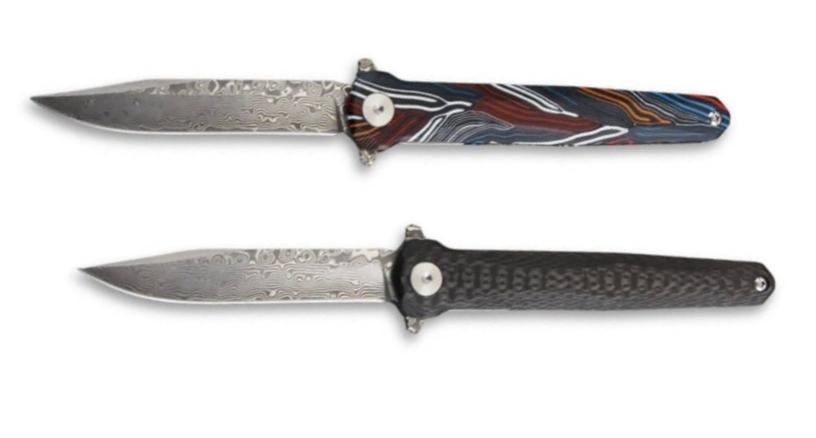
Comparing G10 and carbon fiber knife handles is essential because both materials are popular choices in the knife industry. Let’s look at several key aspects:
Material composition
G10 is made from layers of fiberglass cloth soaked in epoxy resin, compressed and baked under high pressure. This makes it strong, durable, and lightweight. Carbon fiber, on the other hand, is made from carbon atoms arranged in a crystal structure, woven into fabric, and then set in resin.
Weight
G10 is lightweight but heavier than carbon fiber. It’s still lighter than metals like stainless steel. Carbon fiber is one of the lightest materials for knife handles. With a density around 1500-2000 kg/m³, it’s significantly lighter than steel (7850 kg/m³) and aluminum (2700 kg/m³)
Strength and durability
Both materials are very durable. G10 resists impact, abrasion, and moisture, making it ideal for harsh environments. Carbon fiber boasts a tensile strength of 3500-7000 MPa, far exceeding metals like high-carbon steel (400-1200 MPa). Though strong, it can be brittle and might shatter under high impact.
Grip and handling
G10 can be textured for a superior grip, even when wet, making it great for tactical and outdoor knives. Some users might find it feels somewhat plasticky. Carbon Fiber is often smoother and can be slippery if polished, affecting handling when wet.
Maintenance
G10 is low maintenance and can be cleaned with soap and water. It’s resistant to moisture and chemicals, ensuring durability over time. Carbon Fiber is low maintenance too but might need occasional polishing. It doesn’t rust or corrode but can scratch, requiring more care.
Start Working with a Professional Now
Aesthetics
G10 offers various colors and textures. This flexibility allows for creative designs, though some find it has a plasticky feel.
Carbon fiber is highly valued for its sleek, woven pattern that reflects light. Its modern appearance makes it popular for high-end knives. However, Some may think it lacks some warmth and character.
Cost
G10 is relatively affordable due to its simpler manufacturing process. Carbon fiber is pricier because of its complex production and expensive raw materials. This higher cost is justified by its superior strength-to-weight ratio and visual appeal.
Side-by-side comparison
| Feature | G10 | Carbon Fiber |
| Composition | Fiberglass cloth in epoxy resin | Carbon atoms in resin |
| Strength | Very strong, durable | Higher strength-to-weight ratio |
| Impact Resistance | Handles impacts well | More brittle, can chip |
| Grip | Can be textured for superior grip | Smoother, can be slippery |
| Maintenance | Low maintenance | Low maintenance, may need polishing |
| Cost | More affordable | More expensive |
| Aesthetics | Various colors, less visually appealing | Unique, high-end look |
Carbon fiber vs titanium
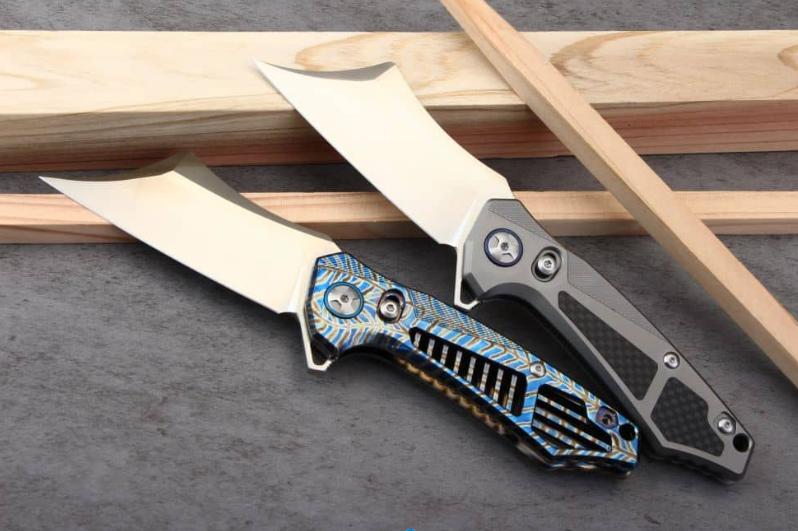
Strength and durability
Carbon fiber boasts a tensile strength between 3,500-7,000 MPa, making it incredibly strong for its weight. This is because it’s made from tightly woven strands of carbon. However, it can be brittle and chip under impact.
In comparison, titanium has a tensile strength of 900-1,200 MPa and is tough, with excellent impact resistance. This means it can handle rugged use better than carbon fiber. It also wears well and doesn’t scratch as easily as carbon fiber.
Imagine a drop test from 6 feet; carbon fiber might show stress marks, while titanium would emerge largely unscathed.
Weight
Carbon fiber and titanium are both light when compared to traditional materials. Carbon fiber has a density of about 1.5-2.0 g/cm³, making it lighter than titanium, which has a density of around 4.5 g/cm³. This makes carbon fiber a popular choice for those who need a lighter EDC (Everyday Carry) knife.
Start Working with a Professional Now
Corrosion resistance
Both materials are highly resistant to corrosion. Carbon fiber is inert to most chemicals, while titanium has a natural oxide layer that protects it from rust, even in saltwater. This makes both materials ideal for knives used in harsh environments.
Temperature resistance
Carbon Fiber feels warmer to the touch in cold weather. Titanium can feel cold in low temperatures but is excellent at conducting heat away quickly.
For cold-weather use, carbon fiber provides a more comfortable grip.
Cost
Typically, carbon fiber is more expensive due to its complex manufacturing process. Titanium is usually cheaper but still costs more than traditional materials.
Side-by-side comparison
| Feature | Carbon Fiber | Titanium |
| Strength | High tensile strength | High strength-to-density ratio |
| Weight | Very lightweight | Heavier than carbon fiber |
| Durability | Brittle, prone to cracking | Highly durable |
| Corrosion | Resistant with appropriate resins | Naturally resistant |
| Wear | Prone to surface scratches | Less prone to scratches |
| Cost | More expensive | Expensive but less than carbon fiber |
| Temperature | Warmer in cold weather | Can feel cold, conducts heat away |
Carbon fiber knife handles: ideal applications
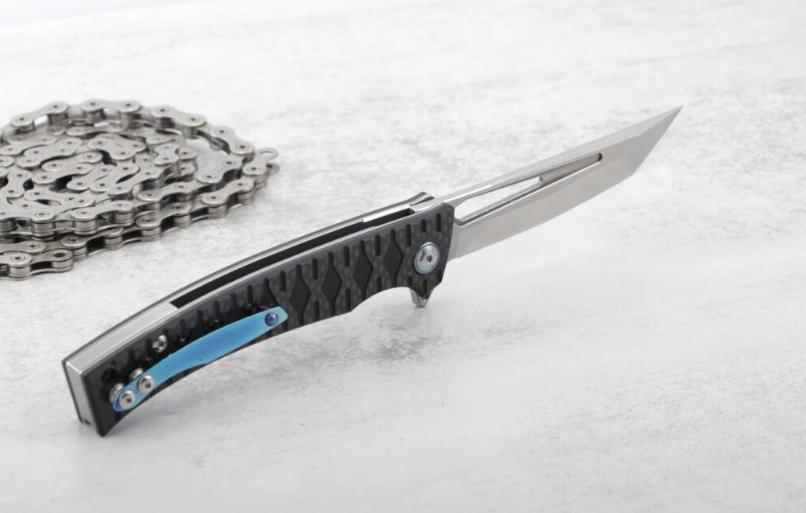
Everyday carry (EDC) knives
Everyday carry (EDC) knives, known for their versatile pocket knife uses, often feature carbon fiber handles. Their lightweight nature makes these knives easy to carry around. Plus, the unique woven pattern of carbon fiber reflects light, giving your EDC knife a sleek, stylish look. Combining style with functionality, carbon fiber handles are a favorite among EDC enthusiasts.
Ultralight backpacking and hiking knives
For ultralight backpackers and hikers, you can’t beat the advantages of carbon fiber handles. They weigh up to 70% less than steel and 40% less than aluminum. This helps reduce your pack weight significantly. Despite being lightweight, carbon fiber is incredibly strong, making it perfect for tough outdoor activities.
Modern tactical knives
Tactical and military professionals benefit from carbon fiber handles due to their superior strength, durability, and resistance to corrosion. The material is five times stronger than steel and twice as stiff. It withstands severe environmental conditions and heavy-duty use, ensuring your knife remains reliable in critical situations.
High-end and premium knives
The sleek, woven pattern of carbon fiber gives a stylish look to high-end knives. These knives are often collected for their looks and craftsmanship. Carbon fiber is commonly used here due to its appearance and higher cost.
How to source high-quality knives with carbon fiber scales From China
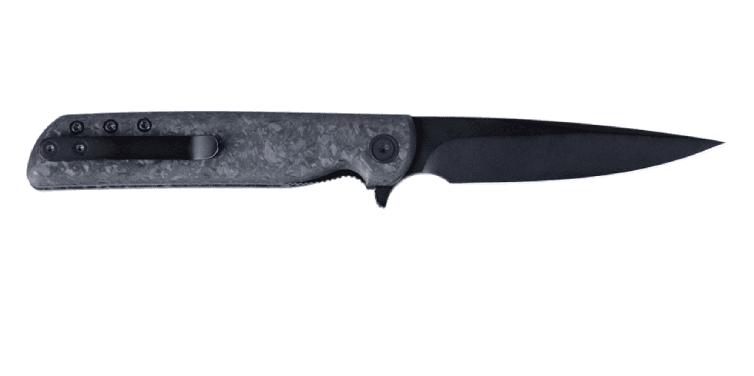
Finding high-quality knives with carbon fiber scales from China can boost your business. Here’s how you can do it effectively:
1. Research knife makers
First, research various OEM knife manufacturers in China. Look for established companies with good reputations.
2. Assess quality
Inspect the carbon fiber materials used in the knife scales. Ensure the carbon fiber is durable and resistant to wear. High-quality materials often add longevity and resilience to the product.
3. Check manufacturer’s reputation
Look for reviews and feedback from other buyers. Verified reviews can give you insight into the reliability and quality offered by the manufacturer. Reputable manufacturers tend to maintain consistent quality.
4. Price comparison
Compare prices across several manufacturers. Ensure the price aligns with the quality of materials and craftsmanship. Sometimes, paying a bit more can secure a better product.
5. Tools requirement
Understand the tools required for knife maintenance. Manufacturers should provide details about the necessary tools, like a high-quality Torx bit set for installations and adjustments.
6. Manufacturer communication
Good communication with manufacturers is key. Make sure they understand your quality requirements and can meet your specifications. Clear communication can prevent misunderstandings and get you exactly what you need.
Final Tips
- Look for manufacturers who offer customization options.
- Evaluate their delivery options and timeline.
- Always request samples before making a bulk purchase.
Frequently asked questions
Can you sand carbon fiber knife scales?
Yes, you can sand carbon fiber knife scales to shape and smooth them. Sanding is a common practice among knife makers to refine the edges and finish of the scales. Use coarser grits (around 220) and progressively move to finer grits. Some makers use very fine grits like 2000 or even micromesh up to 12000 grit for a smooth finish.
Safety precautions are important because carbon fiber dust can be harmful if inhaled. Make sure to wear a mask, gloves, and eye protection. Work in a well-ventilated area and consider wet sanding to minimize dust.
Files can also be used for initial shaping before sanding. If you sand through the factory finish, you may need to reapply a clear coat or use epoxy resin to restore the appearance.
Closing insight: Sourcing knives with Kegani
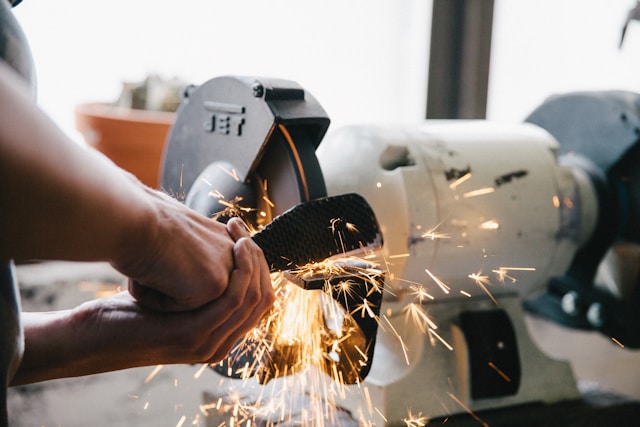
For sellers, it is crucial to understand the market demand. Purchasing knives wholesale allows you to take advantage of reduced prices. This can increase your profit margins while maintaining competitive pricing.
Finding a reputable manufacturer is critical. Consider partnering with top OEM knife manufacturers to ensure high-quality production and reliable delivery. Collaborating with established manufacturers can help launch your knife designs efficiently.
Private label manufacturers can also be a great option. These manufacturers allow you to create customized products that align perfectly with your brand’s identity. Pay attention to services like custom packaging and logo engraving to enhance your product’s appeal.
When sourcing from Chinese knife manufacturers, ensure they have a good track record of quality and reliability. This strategy can help you offer a diverse range of products to your customers while keeping costs manageable.
If you are interested in turning your business into a successful venture, understanding where and how to bulk purchase wholesale knives is essential. Contact us for sourcing high-quality knives with carbon fiber scales that suit your market needs perfectly.
